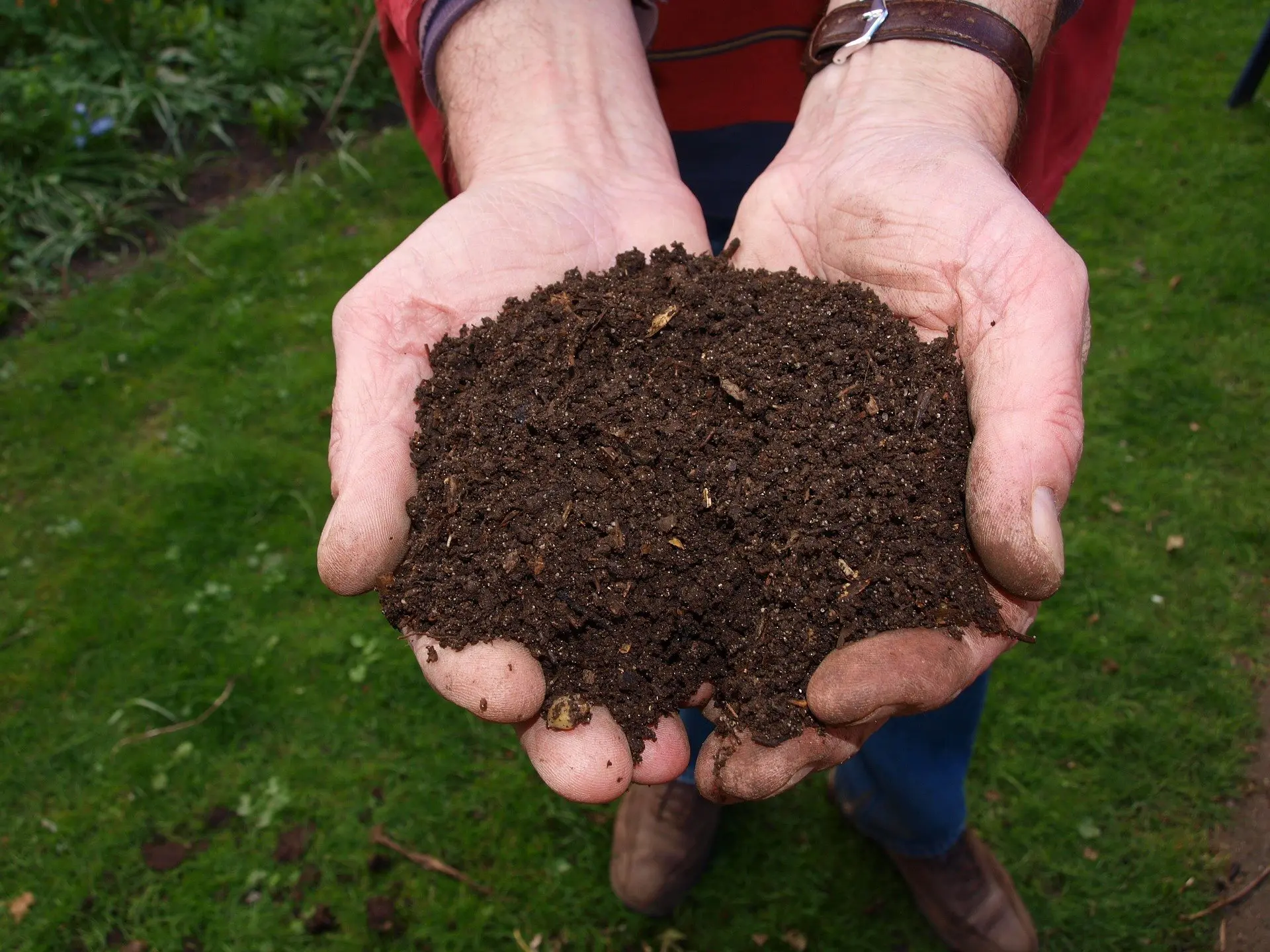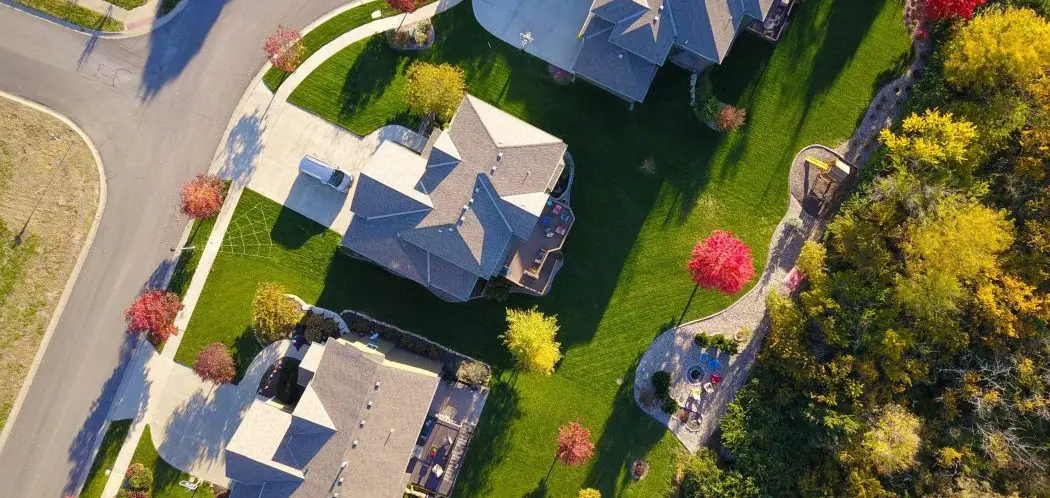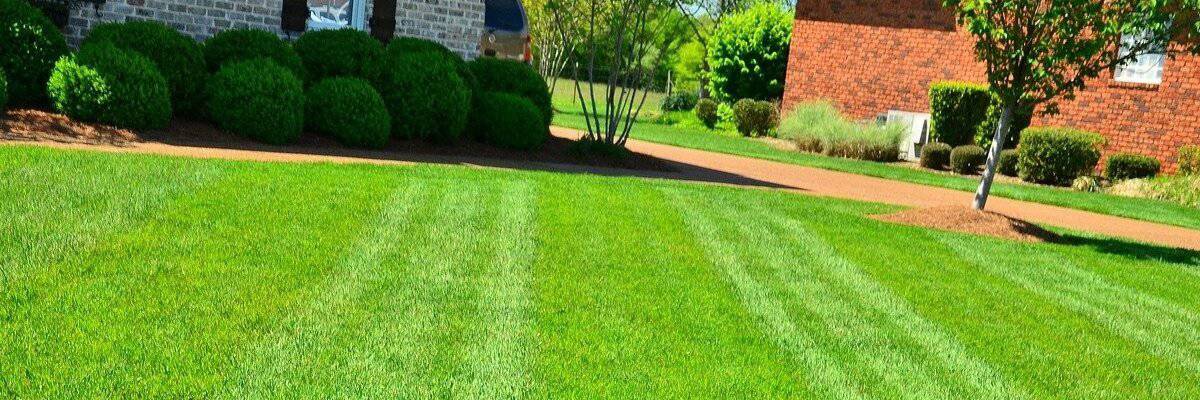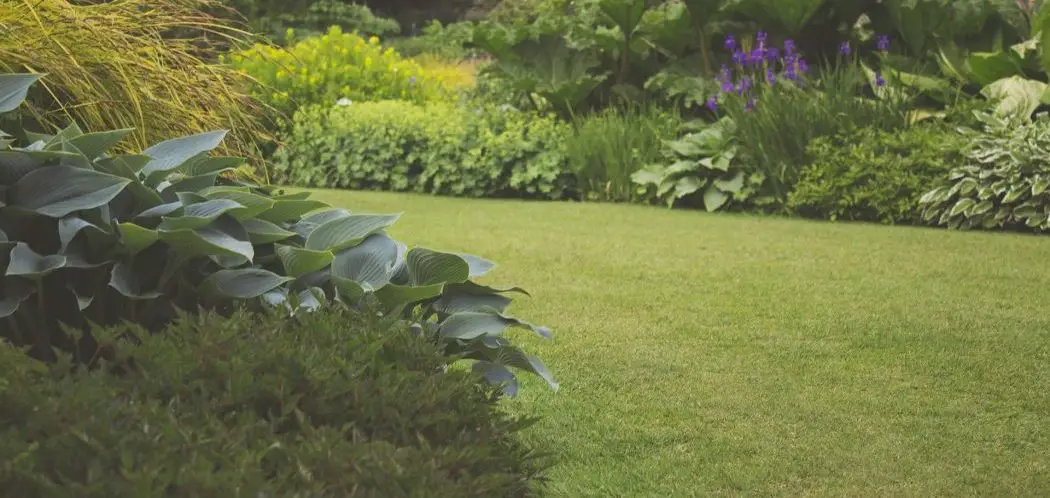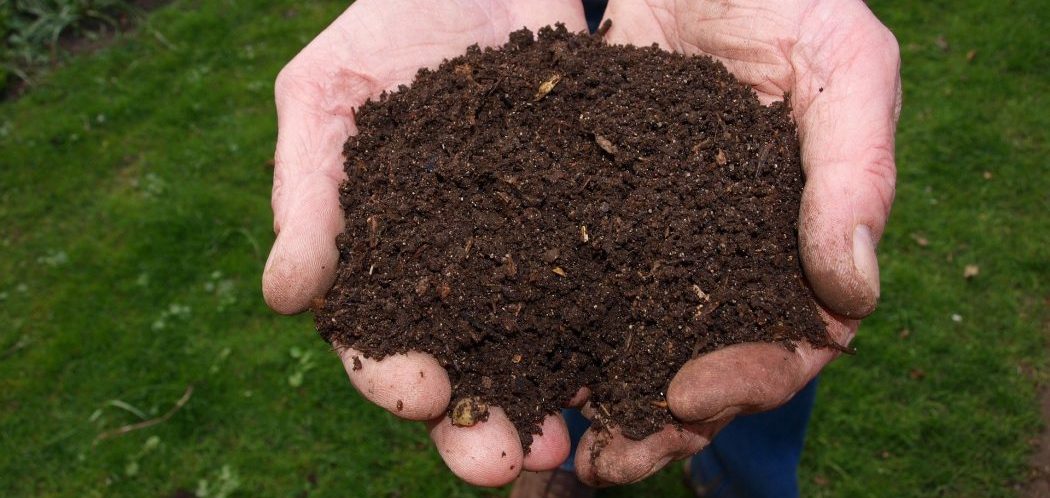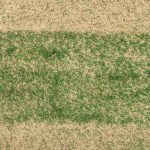If your lawn is looking lackluster, with uneven bumps, thinning grass, or too much thatch buildup, a topdressing project can help revitalize its appearance. But for topdressing to be successful, accurately calculating how much material is required for your specific lawn size and current conditions is absolutely critical. Too little material will fail to achieve desired results, while too much can smother grass and pose application difficulties.
This comprehensive guide will explore in detail the necessary steps for measuring your unique lawn area, selecting the ideal topdressing depth, calculating application rates, converting units properly, adjusting for special considerations, comparing material options, and incorporating organic amendments. Follow these in-depth topdressing calculation steps and you can transform your tired lawn into a smooth, lush landscape you can be proud of.
Introduction to Lawn Topdressing
Topdressing is the process of spreading a thin layer of a specially selected material evenly across the lawn surface. Typical topdressing materials include sand, silt, clay, compost, finely screened soil, or custom blends of these components.
This thin coating of topdressing offers a variety of revitalizing benefits for the lawn:
- Fills in low spots and uneven areas to improve lawn smoothness and playability
- Breaks down and thin out excessive thatch accumulation for healthier grass growth
- Corrects minor imperfections in grading or erosion
- Introduces beneficial organic matter, nutrients, or soil structure amendments
- Reduces soil compaction and improves aeration
- Allows moisture and air to better penetrate to roots
- Provides an overall regenerating boost of nutrients and minerals from organic topdressing components
But in order to achieve those desired results, it is critically important that you calculate precisely how much topdressing material is required for your specific lawn size and parameters. Insufficient coverage will simply fail to provide full benefits, while excessive amounts can overly bury and smother existing grass.
This guide provides step-by-step guidance on measuring your unique lawn area, determining ideal project depth, calculating application rates, adjusting for special considerations, and customizing for your specific needs. Follow along carefully to gain the knowledge to determine exactly how much topdressing material your lawn requires to finally achieve a smooth, lush, healthy landscape.
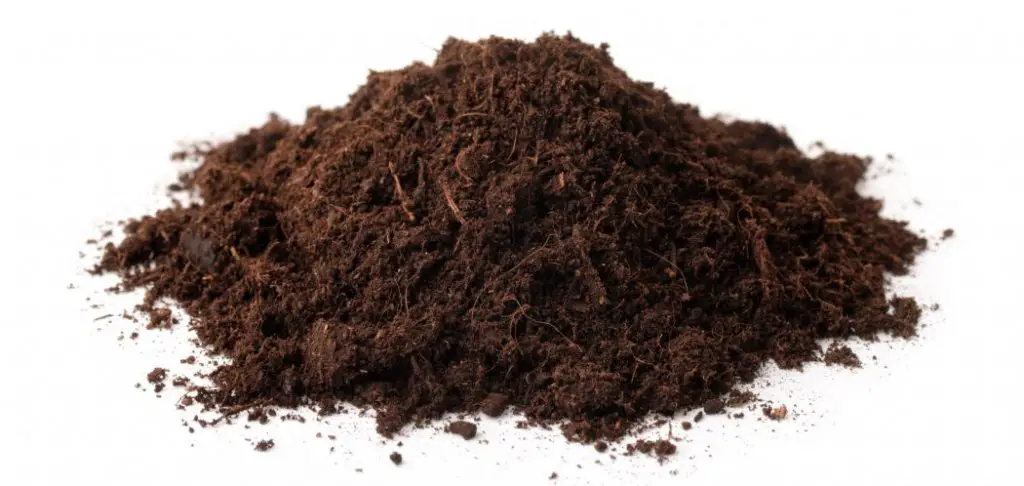
Preparing for Topdressing with Measurements and Inspections
Before making any topdressing calculations, it is important to gather key information about your lawn area and current turf conditions. Accurate measurements and understanding any problem areas or special needs will inform calculations.
Measuring Lawn Area Precisely
The starting point is identifying the total square footage of lawn that you intend to topdress. For basic rectangular spaces, simply multiply length by width to find total area. But for lawns with more complex shapes, take these steps:
- Use a steel tape measure for maximum precision. Laser distance finders and digital mapping tools also work.
- For irregular shapes, divide area into smaller squares, rectangles, circles and triangles. Calculate space of each shape, then add together.
- Account for rounded corners, sidewalks, garden beds, or other hardscape elements that should not be included in the area.
- For sloped yards, take horizontal measurements as if the lawn were flat to find true area.
- Convert final area into square feet for easy alignment with standard topdressing rate units.
- Verify measurements twice for accuracy before making calculations.
Inspecting Lawn Condition
Take time to closely inspect the current health and quality of your turf. Make note of any aspects requiring special attention or extra topdressing, such as:
- Bare or thin areas needing improved coverage
- Sections of heavy thatch accumulation
- Small dips, holes, or depressions requiring filling
- Raised mounds, bumps, or ridges needing smoothing
- Compacted soil impeding drainage
- Visible problems like grub damage, disease, or irrigation issues
Addressing any underlying problems and unhealthy aspects through topdressing will improve outcomes.
Selecting the Ideal Topdressing Application Depth
Choosing an appropriate application depth is key to maximizing the benefits of topdressing while avoiding potential downsides of excess material. Take into account your specific project goals, problem areas, and lawn conditions when selecting depth:
- For very minor smoothing and thinning of superficial thatch buildup, a light topdressing of approximately 1/4 inch in depth is typically adequate. This small layer lightly coats the grass blades and crowns without overwhelming the turf.
- If attempting to provide additional organic matter, moderate compaction relief, or fill very shallow minor divots under 1 inch deep, a medium application of 3/8 inch depth will offer substantial benefits without overburdening the lawn.
- For more prominent deeper bumps, holes, or depressions 1-3 inches deep that require filling, or when preparing the lawn for overseeding, a heavier topdressing layer of 1/2 inch depth allows adequately filling divots while still allowing seed/soil contact.
- Avoid exceeding 1/2 inch depth even when filling deeper holes, as too thick of a material layer can overly restrict air and sunlight from reaching existing grass rather than nourishing it. Focus on shallow but repeated layers for deeper issues.
Selecting a minimal depth adequate to achieve your specific purpose prevents overdoing it. An excessive depth leads to Grass suffocation, difficulty establishing, and a mismatch between expectations and actual outcome. A measured approach optimizes benefits.
Calculating Quantity of Topdressing Material Required
With accurate measurements of your total lawn area and desired topdressing depth, you can precisely calculate how much material is required using standard application rate guidelines.
Typical Topdressing Application Rates
Extensive research and testing has resulted in the establishment of the following standard application rates based on depth:
- For a light topdressing application of approximately 1/4 inch in depth, use 1 pound of material per square foot of lawn area.
- For a medium application around 3/8 inch depth, use 1.5 pounds per square foot.
- For a heavy application at 1/2 inch depth, use 2 pounds per square foot.
These rates provide a simple, proven starting point for quantity calculations.
Converting Lawn Area Units
When utilizing the standard per square foot rates above, it is essential that your total lawn area measurement is converted to square feet:
- If the area is in square yards, multiply by 9 to convert to square feet.
- If the area is in acres, multiply by 43,560 to convert to square feet.
- Use an online unit conversion calculator as needed to convert any measurement into square feet.
Correct unit conversion prevents major miscalculations.
Sample Topdressing Quantity Calculation
Follow this step-by-step example methodology to precisely calculate topdressing needs:
- Accurately measure the total lawn area you plan to topdress in square feet using the techniques discussed earlier in this guide.
- Based on project goals, select the desired topdressing application depth in inches – either 1/4, 3/8, or 1/2 inch.
- Refer to the standard rates table above to identify the correct rate in pounds per square foot matching your selected depth.
- Multiply the standard rate by the total lawn area size in square feet.
- The result is the total pounds of topdressing material required for adequate coverage at the desired depth.
For example, if the lawn area is 5,000 sq ft and the planned depth is 3/8 inch, the calculations would be:
- Total area = 5,000 sq ft
- Selected depth = 3/8 inch
- Standard rate for 3/8″ depth = 1.5 lbs/sq ft
- 1.5 lbs/sq ft x 5,000 sq ft = 7,500 lbs
- Total topdressing needed = 7,500 lbs
Adjusting Quantities for Special Considerations
Certain unique lawn traits or conditions may necessitate adjusting application rates beyond the standard calculations:
- On sloped or hilly terrain, use 10-25% extra topdressing by weight to account for some material runoff on inclines.
- In low spots, high wear areas, or zones needing more significant repairs, add 15-30% extra by weight to ensure adequate filling and coverage.
- If also overseeding, reduce the application rate slightly to prevent burying grass seed too deeply.
- Adjust as needed based on any special traits or requirements of your lawn.
Customizing quantities for the needs of your specific landscape leads to better results.
Factoring in Topdressing Bulk Density
Bulk density is an important property used to convert the weight of required topdressing into the practical volume needed to achieve your desired depth and coverage across the measured lawn area.
Defining Bulk Density
Bulk density refers to the dry mass of a material (like sand, soil, compost) per unit of volume. It represents how much physical space a certain weight of the material will take up. Bulk density is typically expressed as pounds per cubic foot.
Significance in Topdressing Calculations
Knowing the specific bulk density of your chosen topdressing product allows you to convert between total weight needed (in pounds) and practical volume required (in cubic yards) to achieve proper coverage depth over your measured lawn size. Materials with different compositions and particle sizes will occupy different volumes at the same weight.
Determining Bulk Density
To find the bulk density of a topdressing blend, simply measure one cubic foot of the material, weigh it, and divide the weight in pounds by 1 cubic foot. Use this density rating in volume calculations.
Understanding topdressing bulk density helps determine practical volumes from total weight and ensure proper coverage.
Evaluating Topdressing Material Options
Choosing an appropriate topdressing product is crucial, as different materials have qualities that can impact calculation quantities and application methods. Take time to carefully select the best topdressing for your specific lawn’s needs.
Comparing Characteristics of Topdressing Materials
When deciding on a material, consider the unique pros and cons of each option:
- Sand particles provide excellent drainage and filtration capabilities to reduce compaction issues. However, pure sand does not contain organic matter and nutrients, so amendments are advisable. Look for coarse builder’s sand versus fine masonry sand.
- Compost offers beneficial organic matter to nourish soil microbes, as well as a blend of macro and micronutrients. But compost can settle and compact densely if applied beyond thin layers. Purchase high-quality, screened compost versus homemade compost.
- Screened topsoil matches the texture of existing lawn soil most closely for gradual blending. But topsoil varies in structure, and high silt or clay content may affect permeability. Test topsoil composition before applying.
- Custom blends allow tailoring the ratio of sand, soil, compost and specific amendments to meet individual lawn needs. Work with a reputable supplier to develop an optimal custom mix.
Impacts on Quantity Calculations
Particle size, texture, density, permeability, nutrient content, and other physical characteristics of the topdressing material selected will influence calculations including:
- Finer particles require less volume but settle tightly if over-applied, restricting air and water flow.
- Coarser, lightweight particles need greater volume for equivalent coverage depth.
- Amended soils with high organic matter necessitate increased quantity to account for portion of amendment concentration in blend.
- Soil mixtures high in clay or silt settle into a more compacted state compared to sandy blends.
- Materials with poor permeability increase risks of waterlogging if applied too thickly.
Carefully factor the specific qualities and composition of your chosen topdressing into quantity calculations to ensure correct coverage depth and prevent issues. Consider doing a small test area before full application.
Determining Total Weight Needed and Equivalent Volume
Once you have precisely calculated the total weight of topdressing material required using the steps outlined earlier, it is helpful to convert this into a practical volume measurement to inform material purchasing and application.
First Calculate Total Weight
As covered in detail in previous sections, follow the steps below to arrive at the total weight of topdressing needed in pounds:
- Accurately measure your lawn’s area in square feet.
- Select your desired topdressing application depth in inches.
- Refer to the standard application rate table to find the matching pounds per square foot.
- Multiply the standard rate by the total lawn area.
- The result is the total weight of topdressing required in pounds.
Next, Convert Pounds to Cubic Yards
To convert the total weight into a practical volume for application in cubic yards, follow this process:
- Identify the specific bulk density of the topdressing blend you plan to use, expressed in pounds per cubic foot.
- Divide the total weight of material needed in pounds by the bulk density rating. This converts pounds into cubic feet.
- Since materials are sold by the cubic yard, further convert cubic feet into cubic yards. There are 27 cubic feet in 1 cubic yard.
- The final result is the volumetric quantity of topdressing in cubic yards required to achieve the desired depth across your measured lawn area based on the specific density of your chosen material.
Converting weight into the equivalent practical volumetric measurement provides a target purchase quantity and application volume.
Incorporating Organic Matter
Adding quality compost, humus, or topsoil at 25-40% of the total volume is advisable to incorporate vital organic matter, microbes, and nutrients into the topdressing blend.
The Benefits of Adding Organic Matter
Organic components like compost, humus, peat moss, and topsoil provide food for soil microbes, enrich nutritional composition, improve moisture retention, and contribute to long-term soil structure enhancement.
Calculating Requirements
If adding 40% organic matter by volume, multiply the total topdressing volume needed by 0.4. Use that quantity of compost, humus, etc. and make up the remaining portion with sand, mineral fines, or other base material.
Carefully incorporate appropriate organic amendments to optimize the benefits of the topdressing application.
Conclusion
Proper planning and precise calculations are crucial prerequisites for executing a successful DIY lawn topdressing project. Follow this guide closely to measure your lawn’s unique area, select the ideal topdressing depth, calculate required quantities using standard rates and conversions, adjust as needed for special considerations, and incorporate optimal organic amendments. With accuracy and attention to detail, you can achieve a perfectly smooth, nourished lawn through quality topdressing tailored to your specific space and conditions. Precise topdressing calculations pave the way for dramatically improving the health and beauty of your landscape.

